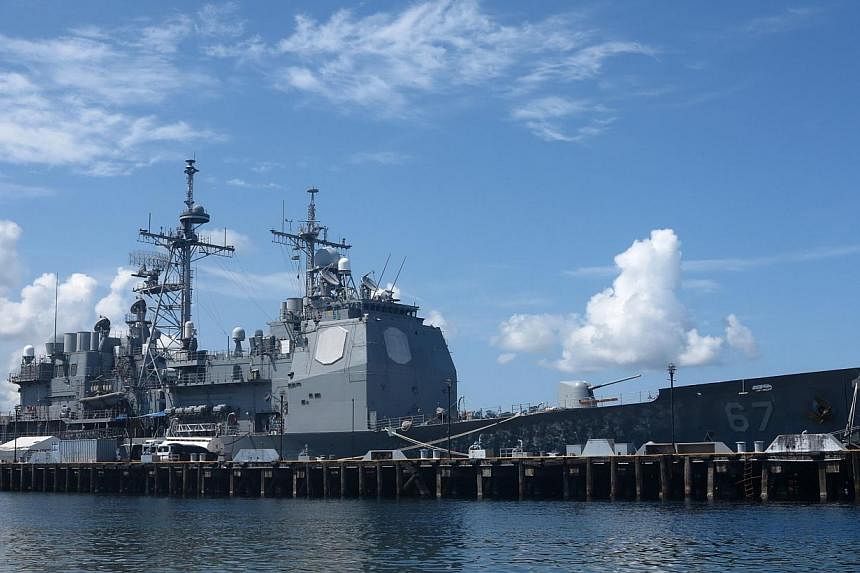THE variance of views between China and the United States regarding the South China Sea situation is quite significant and stark. More worrying, both have publicly staked out positions that make it politically difficult to back down or even compromise.
What are the possible and most probable scenarios going forward?
'Leaking' status quo
THE most likely scenario is a continuation of the status quo - even though it is "leaking". In this scenario, the US continues to challenge China's actions and sovereignty by overflying geographical features, and sailing warships within the features' presumed 12 nautical miles territorial sea. This would imply non-recognition of China's sovereignty and its prior-notification regime for warships to enter its territorial sea.
To avoid unnecessarily provoking and embarrassing China, the US may restrict these probes to only those features that were not above high water before the reclamation activities and are therefore not islands, according to the United Nations Convention on the Law of the Sea.
China does not respond physically to these provocations but does increase its warnings and verbal criticism of the US actions. Meanwhile, the US continues to strengthen its military alliances and "friendships" in the region, and the US and China both lobby intensely within Asean to gain support for their respective positions.
Relations deteriorate. If there is no compromise, eventually, a tipping point is reached and the two become open rivals, the region becomes polarised, a regional arms race ensues, and incidents become relatively frequent and dangerous.
The US may organise and lead "from behind" a major multilateral naval exercise in the South China Sea involving Australia, Japan, the Philippines and probably others.
The focus would be on civilian issues, like search and rescue, safety of navigation, natural disaster and humanitarian crisis response, and environmental conservation.
China argues that its reclamation is primarily designed to support such civilian-oriented activities, and has even invited the US and others to use the facilities "when conditions are right".
In this context, the participants might invite China to join the exercises. In any case, the multilateral activities would include overflight and vessel penetration of some features and their territorial sea.
However, this leaking status quo may not be sustainable and could quickly transition to a real crisis. China may physically confront the US probes, resulting in a series of incidents between US and China aerial and maritime military assets. However, as US Defence Secretary Ashton Carter observed: "We all know there is no military solution to the South China Sea disputes."
Indeed, this scenario is currently unlikely because China does not yet have the capability in the area to challenge the US probes and it is not ready to deal with the consequences of an escalation. China would likely bide its time until it feels ready to do so. The worst fears of the US and others may then materialise. China may declare an Air Defence Identification Zone over the Spratlys - or at least those features it occupies - and militarise them.
Compromise needed
PERHAPS a compromise by all concerned can avoid such a scenario and shore up, and even move things forward from, the status quo. The core of the US-China part of a bargain would be for the US to cut back on its close-in and mostly - in this age of satellites - unnecessary intelligence, surveillance and reconnaissance probes of China's mainland coastal and and near-offshore military installations, including its new nuclear submarine base at Yulin on Hainan. It could also agree to stay out of the maritime and air space 12 nautical miles around what were originally natural islands.
In exchange, China would - at least for now - not declare an Air Defence Identification Zone over the Spratlys. The US and China would also compromise and conclude the air portion of their "unplanned encounters" agreement.
As for the ongoing reclamation activities by China and maintenance by other claimants, that would be wound down and cease by an agreed date. The features could be demilitarised in coordinated phases. This agreement would be difficult for the claimants because without maintenance, the artificial expansions of their features would likely erode.
Perhaps the agreement would fix in place what exists now and allow its maintenance - but no more. The details of such an agreement would have to be secret so that all can save face and mitigate pressure from domestic nationalists.
The situation is becoming very dangerous - not so much for China and the US but for the South-east Asian countries and Asean itself, which could be rent asunder by US-China competition for power and influence. At stake may be Chinese President Xi Jinping's scheduled September visit to Washington, as well as peace and stability in the region.
Hopefully, their loss will not be the outcomes of the current confrontation. After all, as the new chief of American forces in the Pacific, Admiral Harry Harris, said: "Conflict is bad for business."
The writer is adjunct senior scholar at the National Institute for South China Sea Studies in Haikou, China.

